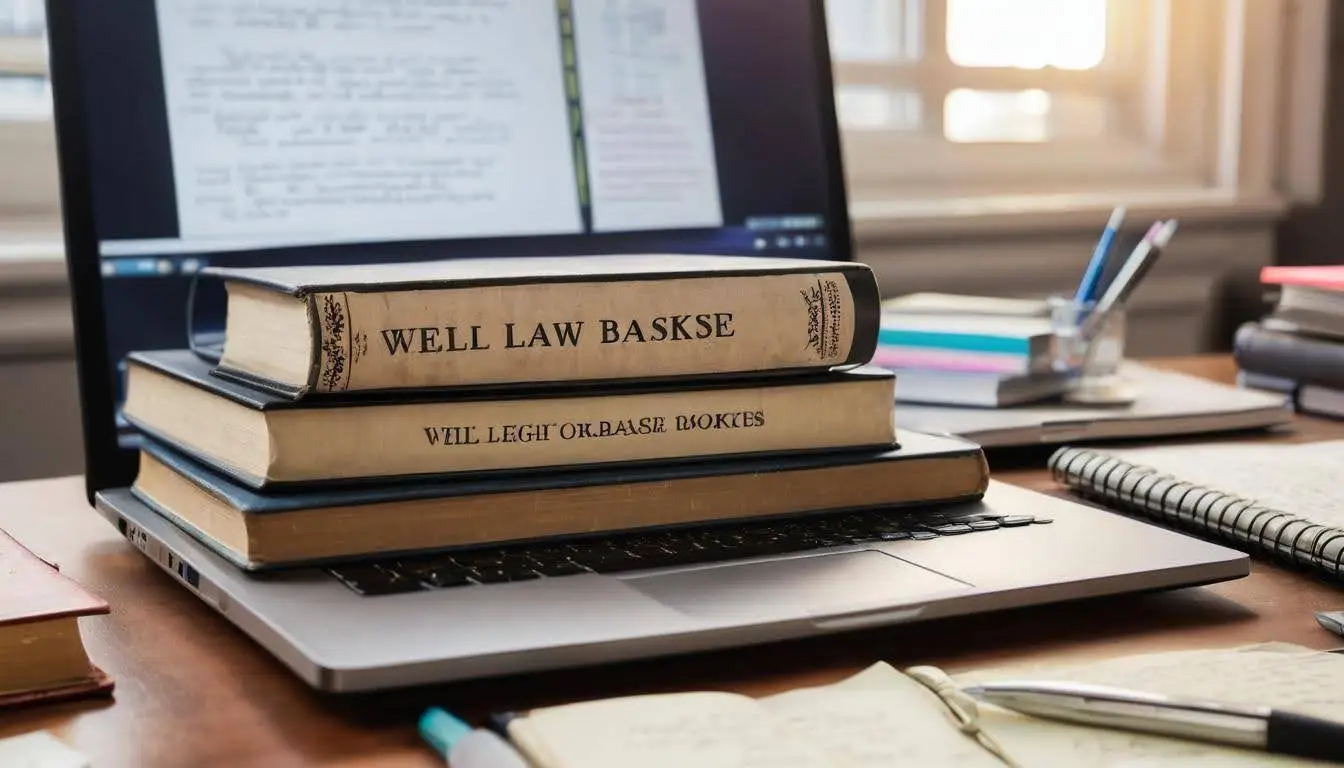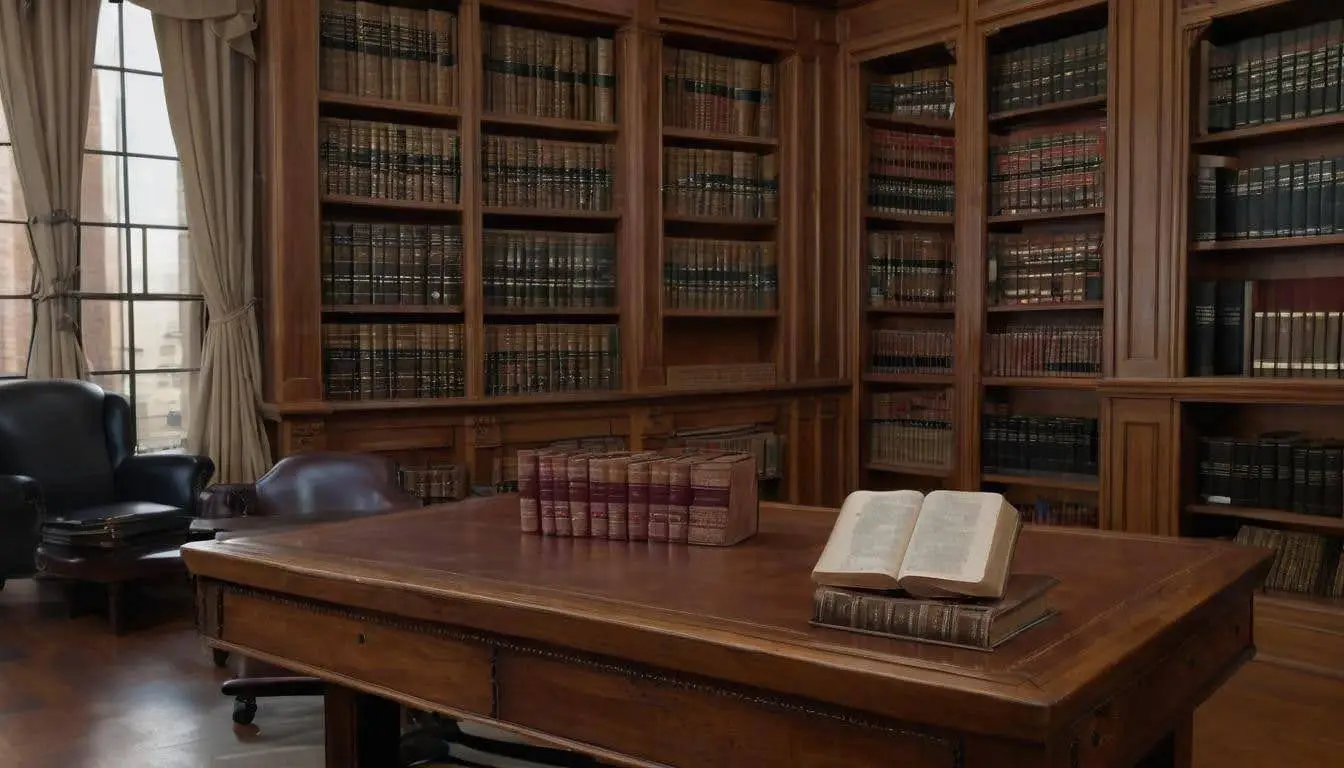

Navigating the maze of legal resources is not just a skill; it’s an absolute necessity for effective and efficient casework. Any seasoned lawyer knows that having quick access to reliable legal texts can make or break a deadline. But often, this means sifting through vast amounts of dense material—a process that can leave even the most dedicated professional feeling overwhelmed.
Recognizing this struggle, we've crafted a detailed guide aimed at easing your workload. By clearly defining primary and secondary legal resources, we aim to help you piece together intricate legal puzzles with greater ease. The distinction between these resource types isn't just academic; it’s practical. Knowing how and when to use them can transform your research process. Now, let’s explore first the bedrock upon which all other sources depend: primary legal materials.
Legal resources can be categorized into three main types: primary sources, such as constitutions, statutes, regulations, and case law; secondary sources that interpret and analyze primary laws, including legal commentaries, encyclopedias, and treatises; and tertiary sources which provide broader overviews like bibliographies or indices. Each type serves a crucial role in legal research, helping practitioners and scholars navigate complex legal frameworks.

Legal resources are critical for anyone involved in the legal profession, whether you’re an attorney, a student, or simply an informed citizen. They provide the necessary foundation for understanding laws and regulations. Legal resources can be broadly categorized into primary and secondary sources, with each playing a distinct role within the realm of legal research.
Primary legal resources are the authoritative texts that form the bedrock of our legal system. These include constitutions, statutes, regulations, and court opinions. For instance, statutes are laws enacted by legislative bodies at both federal and state levels. Each statute embodies formal rules intended to govern behavior, and knowing how to locate them is essential when interpreting specific legal scenarios.
The constitution is sometimes referred to as the supreme law of the land, providing a framework upon which all other laws rest.
Court opinions present case law decisions made by judges in court, which interpret statutes and contribute to the body of law. They set precedents that future cases may follow. Studying prior court opinions is vital to grasp how similar situations might be resolved; they often provide insights into how the law has evolved over time.
On the other hand, we have secondary legal resources, which serve a different purpose. These materials can include legal encyclopedias, treatises, and law journal articles. While primary sources can be dense and difficult for non-experts to navigate, secondary sources simplify this complexity.
Legal encyclopedias like American Jurisprudence (AmJur) provide comprehensive summaries of various legal doctrines, acting as excellent starting points for any research endeavor. Treatises offer in-depth discussions about specific areas of law written by experts; they can be extraordinarily helpful for detailed inquiries.
Law journal articles, usually published by academic institutions, present cutting-edge research and analyses on contemporary legal issues, making them valuable for practitioners and scholars alike.
Because they explain concepts and provide context around primary resources, secondary sources enable clearer understanding. They help bridge the gap between raw legal text and practical application. This supportive role is vital for attorneys crafting arguments based on statutes or past rulings; without their insights, the complexities of law could easily overwhelm even seasoned professionals.
Understanding these distinctions prepares us to examine the foundational elements that constitute the core of our legal system.

Primary legal resources are fundamental documents that establish and govern laws. They form the backbone of any legal system. These resources include constitutions, statutes, regulations, and case law, all of which play a critical role in defining our rights and responsibilities.Let’s explore each of these categories to see why they're vital.
At the heart of every legal framework is the constitution. This document serves as the supreme law of the land, laying down the basic principles for governance and the rights of individuals. In countries like the United States, both the U.S. Constitution and individual state constitutions hold immense authority.
They not only outline the structure of government but also protect citizens’ freedoms, from freedom of speech to due process under the law. Understanding one’s constitution is akin to reading a user manual for living in that society; it provides crucial insights into what citizens can expect from their government.
Another key component is statutes—laws passed by legislative bodies at either the state or federal level. For instance, in the United States, all permanent federal statutes are compiled in the United States Code (U.S.C.). Each state has its own set of codes, which catalog local laws relevant to that particular region.
These statutes cover a wide range of issues—everything from criminal law to property law—and are critically important because they provide specific rules and regulations under which we operate daily.
Regulations get even more detailed. While statutes lay out broad laws, they often delegate authority to government agencies to create specific rules that enforce those laws. You can find these regulations compiled in volumes such as the Code of Federal Regulations (CFR) for federal-level rules or state administrative codes for state-specific directives.
Think of regulations as the fine print that explains how laws should be implemented; without them, statutes could remain meaningless on paper.
Finally, we arrive at case law, which emerges from judicial opinions interpreting those very statutes and regulations. A landmark example would be Brown v. Board of Education, which played a significant role in shaping civil rights legislation in America by interpreting constitutional mandates against racial segregation.
Accessing platforms like Westlaw or LexisNexis allows legal professionals to sift through vast repositories of case rulings, making it easier to analyze how courts have applied various laws across different circumstances. Each case contributes not only to legal precedent but also guides future judicial decisions.
Having examined these primary sources that provide structure and authority in our legal framework, we can now turn our attention to additional resources that enhance understanding and application within this field.

Secondary legal resources serve a vital role in legal research by providing insightful commentary and analysis, making it easier to navigate the challenging waters of the law. They don’t replace primary sources—like statutes or case law—but complement them by offering context and interpretation that helps illuminate the sometimes vague nuances of legal language. This layered approach assists legal practitioners, students, and even laypeople in comprehending how laws are applied and understood in various situations.
Among the most accessible tools in this category are legal encyclopedias such as American Jurisprudence (AmJur) and Corpus Juris Secundum (CJS). These publications provide comprehensive overviews of legal topics organized alphabetically, summarizing hundreds of doctrines that span both state and federal levels.
The beauty of these encyclopedias lies in their ability to present dense, intricate ideas in straightforward language, making them indispensable for anyone embarking on legal research. For example, if you find yourself grappling with principles surrounding tort law, a few pages from AmJur can not only define terms but also offer precedents and relevant statutes—all laid out clearly.
Moving deeper into the realm of secondary resources, we come across treatises—scholarly works meticulously examining specific areas of law. These books are often regarded as authoritative texts within their fields due to their exhaustive nature and detailed analysis.
Take, for instance, Collier on Bankruptcy. This prominent treatise provides a thorough exploration of bankruptcy law, detailing both historical context and contemporary applications. Treatises are valuable tools for practitioners seeking to understand specific legislation or case law. They’re like having an expert guide right by your side when you need to dive into intricate legal principles.
Another significant resource comes from law journals, which are published mainly by academic institutions. These journals explore niche issues, from emerging trends in technology-related law to discussions on civil rights legislation.
Articles often include critical analyses backed by extensive citations to both primary and secondary sources, giving readers a robust framework for understanding complex areas of law. For instance, one might turn to the Harvard Law Review for an enlightening article discussing recent Supreme Court decisions, which not only examines implications but also situates them within existing jurisprudential debates. Such articles are particularly useful for those looking to grasp not just the "what" but also the implications and reasoning behind legal decisions.
With a solid understanding of these key types of secondary resources, we can now transition to exploring effective methods for locating these invaluable legal materials online.

In today’s digital age, the internet is a treasure trove of legal information and resources. It's crucial to understand how to sift through the vast amount available to find what you need effectively. One great starting point is law databases—these platforms can streamline your research process significantly.
As previously noted, Westlaw and LexisNexis are two of the most reputable legal research databases available. These platforms offer advanced search tools that allow users to drill down into case histories and cross-reference relevant legal precedents and statutes. However, they often come with subscription fees, making them more suitable for law firms or serious researchers rather than casual users. Many law schools provide temporary access to these databases for student projects or public interest needs.
Another appealing option is exploring your local library's resources. Many libraries have subscriptions to these databases and offer patrons free access on site. This can open doors for those who might otherwise be unable to pay for individual subscriptions but are looking for quality information.
Moving onward from specialized databases, many government websites provide invaluable access to primary legal materials without any associated costs. For instance, the Legal Information Institute (LII), hosted by Cornell University, boasts an easily navigable searchable database of U.S. statutes and Supreme Court opinions. Additionally, official government sites typically contain regulations, amendments, and case law that are critical for anyone seeking comprehensive legal knowledge.
It’s worth noting that while these sources provide essential materials, they may not always encompass the latest updates or changes in legislation immediately.
Beyond LII, you can visit sites like USA.gov or state-specific portals where legislative information is consistently updated, ensuring you have access to current laws relevant within your jurisdiction.
| Resource Type | Examples | Access Type |
|---|---|---|
| Primary Legal Sources | United States Code, Federal Register, Case Law | Subscription-Free |
| Secondary Legal Sources | AmJur, CJS, Law Journals | Subscription-Based |
| Research Databases | Westlaw, LexisNexis, LII | Mixed |
After understanding how to locate legal resources online properly, it’s important to explore available options for obtaining professional legal advice without incurring significant costs.

For countless individuals facing legal challenges, knowing where to turn for help can transform an overwhelming situation into a manageable one. Free legal advice services are vital lifelines that provide support without the burden of high costs. Many people mistakenly assume these resources are only for civil cases; however, they encompass various legal issues, from family law disputes to tenant rights and even immigration matters.
One of the most well-known options is Legal Aid Societies. These organizations operate nationwide, working tirelessly to assist low-income individuals who qualify based on specific income guidelines. They shield their clients from the complexities of the legal system while addressing critical issues such as housing stability and access to healthcare. However, due to increased demand and often limited staff and funds, these organizations might face resource constraints. It’s wise to apply early and provide any requested documentation promptly to streamline your application process.
Always remember: accessing your local legal aid society is like opening a door to invaluable knowledge—once inside, you’ll find a wealth of resources just waiting to help.
Another option is Pro Bono Services offered by many law firms. Here, attorneys volunteer their expertise as part of their professional commitment to ensuring justice is accessible to all—regardless of financial circumstances. While this service can be incredibly useful, availability often depends on the firm's workload and their ability to handle additional cases. If you find a firm offering pro bono work, keep in mind that the complexity of your case may influence whether they can take you on as a client.
To maximize your chances of securing pro bono representation, prepare a clear and succinct overview of your legal issue when reaching out. The simpler and more direct you can convey your case details, the better positioned you will be.
Lastly, we have Online Platforms, which have grown exponentially in recent years. Websites like Avvo and JustAnswer provide easy access to free or low-cost legal advice from qualified attorneys. These platforms often feature forums where users can pose questions or concerns anonymously. However—and this is essential—always ensure that you verify the credentials of any advisor before making significant decisions based on their guidance.
Navigating these online portals can often feel like exploring a maze; with patience and careful scrutiny, you’ll pinpoint trustworthy information tailored to your needs.
By understanding how each free legal service functions and knowing what preparation is required, you empower yourself not only with knowledge but also with actionable strategies for tackling future challenges in the legal realm.

Knowing how to navigate the wealth of legal resources available can truly make a difference in your research experience. By adopting a targeted approach, you can save time and increase the accuracy of your findings. It starts with defining your legal issue. Take a moment to think about what you're researching. Are you looking for case law, statutory interpretation, or perhaps a historical analysis? Understanding precisely what you need streamlines your efforts and directs your focus where it counts.
Once you've identified your specific legal issue, the next step is selecting the right resources. Determine whether primary sources, such as statutes or court cases, are necessary for your research, or if secondary sources like treatises and law reviews would better suit your needs. Each type of resource serves its purpose—primary sources provide the foundational law, while secondary sources interpret and analyze those laws. Choosing appropriately can mean the difference between sifting through endless documents or finding exactly what you need swiftly.
However, after gathering information, it's vital to ensure that you verify what you've found.
Cross-referencing is essential in the legal field due to the gravity of potential errors in understanding or interpreting the law. Use multiple credible sources to corroborate important facts or interpretations. A statute may be interpreted differently by various courts, so comparing opinions ensures you get a comprehensive view. Reliable platforms like Westlaw and LexisNexis help facilitate this by linking related cases and citations, providing necessary context as you seek clarity.
When utilizing these databases, take advantage of search filters and advanced search options; they can refine results based on jurisdiction, date range, or document type. Keeping your search terms specific helps avoid information overload—a common pitfall for those new to legal research.
Lastly, hearing from others offers valuable insights into the research process.
Testimonials from fellow researchers underscore the effectiveness of using a mix of resources. "Utilizing both primary and secondary resources led me to successfully argue my first case," says Jane Doe, a recent law graduate. "The resources at Westlaw were invaluable." This emphasizes not only the capability of these resources but also the importance of blending different types for comprehensive understanding.
Equipped with these insights and approaches, you're ready to engage in your legal research journey with confidence and clarity.
Law Resource, a trusted name in legal advocacy, is revolutionizing the way accident victims and consumers access vital legal information.